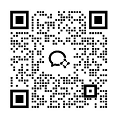How Does a Thin Section Angular Contact Bearing Work?
Thin section angular contact bearings represent a sophisticated advancement in bearing technology, combining compact design with precise angular load handling capabilities. These specialized bearings are engineered to maintain exceptional performance while occupying minimal radial space, making them invaluable in applications where space constraints are critical. The unique design features a contact angle between the rolling elements and raceways, enabling them to handle both radial and axial loads simultaneously, while their thin cross-section provides remarkable space efficiency without compromising load-bearing capacity.

What are the key advantages of using Thin Section Angular Contact Bearings in robotics applications?
The integration of thin section angular contact bearings in robotics has revolutionized the way robotic joints and articulations are designed and implemented. These bearings have become indispensable in modern robotics due to their exceptional space-saving characteristics and superior performance capabilities. In robotic applications, where precise movement and positioning are paramount, these bearings offer several distinct advantages. The reduced cross-sectional profile allows for more compact joint designs, enabling robots to maintain a smaller form factor while retaining full range of motion. This is particularly crucial in collaborative robots and precision automation systems where space optimization directly impacts operational efficiency.
The bearings' angular contact design provides excellent rigidity and moment load capacity, essential for maintaining accurate positioning in robotic arms. Their ability to handle combined loads – both axial and radial – makes them ideal for complex robotic movements that involve multiple axes of rotation. The precision engineering of these bearings ensures minimal friction and smooth operation, contributing to enhanced energy efficiency and reduced wear in robotic systems. Additionally, their design allows for preload adjustment, which is crucial for eliminating unwanted movement or play in robotic joints, ensuring repeatable precision in automated operations.

Moreover, these bearings contribute significantly to the overall accuracy and repeatability of robotic systems. Their superior running accuracy and minimal rotation deviation characteristics enable robots to perform highly precise tasks in applications such as semiconductor manufacturing, medical devices assembly, and other high-precision industrial processes. The combination of light weight and high stiffness also makes them perfect for high-speed robotic applications where dynamic performance is crucial.
How do you properly maintain and lubricate Thin Section Angular Contact Bearings?
Proper maintenance and lubrication are crucial factors in ensuring the optimal performance and longevity of thin section angular contact bearings. The maintenance protocol begins with regular inspection schedules that monitor bearing condition, operating temperature, and vibration levels. These bearings require specific attention to cleanliness during both installation and operation, as their thin cross-section makes them particularly sensitive to contamination. Implementing appropriate sealing solutions and maintaining a clean operating environment are essential practices in preventing premature bearing failure.
Lubrication plays a vital role in the bearing's performance and service life. The selection of appropriate lubricant type and quantity requires careful consideration of factors such as operating speed, temperature, load conditions, and environmental factors. For high-speed applications, oil lubrication might be preferred due to its superior cooling properties and ability to be filtered and recirculated. In contrast, grease lubrication might be more suitable for moderate-speed applications where simplified maintenance is desired. The thin section design requires precise lubrication quantities – over-lubrication can be as detrimental as under-lubrication, potentially leading to increased operating temperatures and reduced efficiency.
Regular monitoring of lubricant condition is essential, including periodic analysis of oil or grease samples to detect any signs of contamination or degradation. The relubrication interval should be carefully determined based on operating conditions, with attention paid to changes in bearing noise, temperature, or vibration that might indicate lubrication issues. Additionally, proper handling procedures during maintenance operations are crucial to prevent damage to these precision components, including the use of appropriate tools and clean working environments.
What factors should be considered when selecting Thin Section Angular Contact Bearings for specific applications?
The selection process for thin section angular contact bearings requires a comprehensive analysis of various application-specific factors to ensure optimal performance and reliability. Load characteristics form the primary consideration, including the magnitude and direction of both static and dynamic loads, as well as any moment loads that the bearing might experience. The bearing's load rating must be carefully evaluated against the application's requirements, considering both maximum loads and typical operating conditions.
Speed requirements represent another critical factor, as these bearings are capable of operating at various speeds depending on their design and lubrication method. The application's speed range must be considered alongside the bearing's speed rating, taking into account factors such as heat generation, lubrication requirements, and the need for cooling at higher speeds. The operating environment also plays a crucial role in bearing selection, including temperature ranges, exposure to contaminants, and the presence of vibration or shock loads.
Space constraints often drive the selection of thin section angular contact bearings, but this must be balanced against the bearing's capacity to handle the required loads and speeds. The mounting arrangement and installation requirements need careful consideration, including the accuracy of supporting structures and the ease of maintenance access. Additionally, precision requirements of the application must be matched with the bearing's accuracy class, considering factors such as runout tolerance, positioning accuracy, and rotational precision needs.
Luoyang Huigong Bearing Technology Co., Ltd. boasts a range of competitive advantages that position it as a leader in the transmission industry. Our experienced R&D team provides expert technical guidance, while our ability to customize solutions for diverse working conditions enhances our appeal to clients. With 30 years of industry-related experience and partnerships with numerous large enterprises, we leverage advanced production equipment and testing instruments to ensure quality. Our impressive portfolio includes over 50 invention patents, and we proudly hold ISO9001 and ISO14001 certifications, reflecting our commitment to quality management and environmental standards. Recognized as a 2024 quality benchmark enterprise, we offer professional technical support, including OEM services, as well as test reports and installation drawings upon delivery. Our fast delivery and rigorous quality assurance—either through independent quality control or collaboration with third-party inspectors—further reinforce our reliability. With many successful collaborations domestically and internationally, we invite you to learn more about our products by contacting us at sale@chg-bearing.com or calling our hotline at +86-0379-65793878.
References
1. Kaydon Bearings. "Thin Section Bearing Technical Guide." Technical Publication, 2023.
2. SKF Group. "Angular Contact Ball Bearings: Design and Application." Engineering Manual, 2024.
3. NSK Americas. "Precision Bearing Selection Guide for Robotics Applications." Technical Report, 2023.
4. JTEKT Corporation. "Thin Section Bearings in Modern Manufacturing." Industry Analysis, 2024.
5. Timken Company. "Bearing Maintenance and Lubrication Guidelines." Maintenance Manual, 2023.
6. IKO International. "Selection Criteria for Precision Bearings." Engineering Guide, 2024.
7. NTN Corporation. "Advanced Bearing Solutions for Industrial Automation." Technical Bulletin, 2023.
8. THK America. "Precision Components in Robotics: A Technical Overview." Research Paper, 2024.
9. Schaeffler Group. "Bearing Installation and Maintenance Best Practices." Technical Guide, 2023.
10. American Bearing Manufacturers Association. "Standards for Precision Bearings." Industry Standards, 2024.

